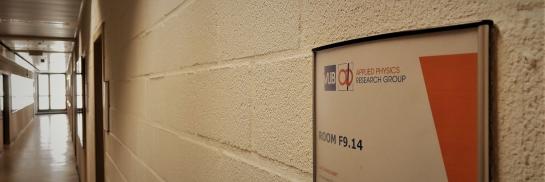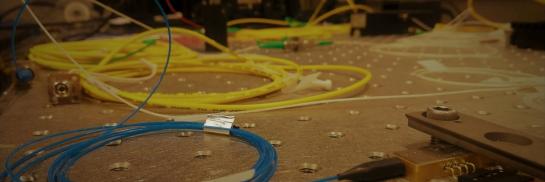The Applied Physics group (APHY) is a multidisciplinary group of enthusiastic researchers from the Departments of Physics and of Applied Physics & Photonics from the Faculty of Engineering.
We use experimental and theoretical methods to address fundamental challenges in biological physics, condensed matter physics, electromagnetism, laser physics and photonics. This combination allows an imaginative, cross-disciplinary and insightful approach to such problems. For example, we focus on the study of metamaterials and nanophotonics, on bio-inspired approaches to machine learning (reservoir computing), on the dynamics of semiconductor lasers, nonequilibrium pattern formation and soliton dynamics, as well as on genetic transcription, cell division & microbial interactions in biological systems.


PhD Krishan HARKHOE
Krishan Harkhoe obtained on October 7, 2022 the academic degree of DOCTOR OF ENGINEERING SCIENCES with the following doctoral thesis: Neuro-inspired Photonic Computing: Strategies towards all-optically integrated delay-based reservoir computing.
PhD Jaël PAUWELS
Jaël Pauwels obtained on September 8, 2021 the academic degree of DOCTOR OF ENGINEERING SCIENCES with the following doctoral thesis: High-performance optical reservoir computing based on spatially extended systems. Promotors: Prof. dr. ir.
PhD Nathaniel Mon PERE
Nathaniel Vincent Mon Père obtained on November 27, 2020 the academic degree of DOCTOR OF SCIENCES with the following doctoral thesis: 'Statistical biophysics of hematopoiesis and growing cell populations'. Promotor: Prof.

-
The influence of ergodicity on risk affinity of timed and non-timed respondents
-
Impact of phase modulation on the performance of photonic delay-based reservoir computing with semiconductor lasers
-
Influence of the input signal’s phase modulation on the performance of optical delay-based reservoir computing using semiconductor lasers
-
Impact of phase modulation on the performance of photonic delay-based reservoir computing with semiconductor lasers
-
Cell geometry, signal dampening, and a bimodal transcriptional response underlie the spatial precision of an ERK-mediated embryonic induction


